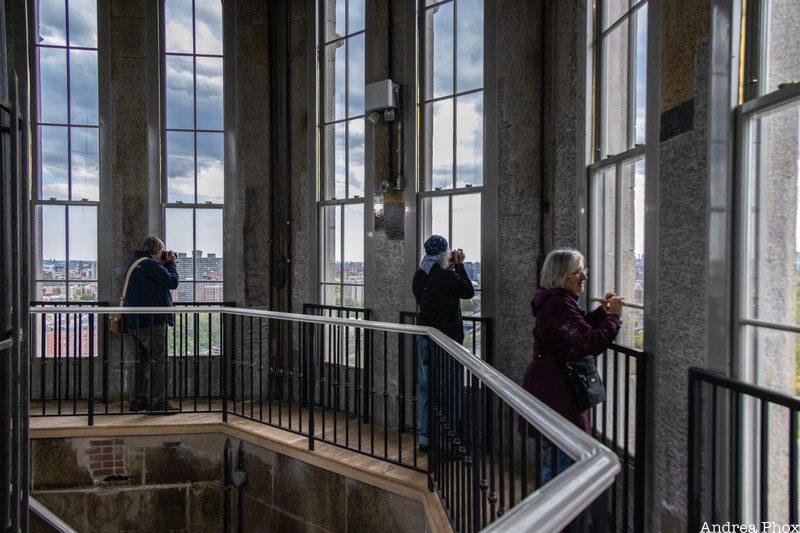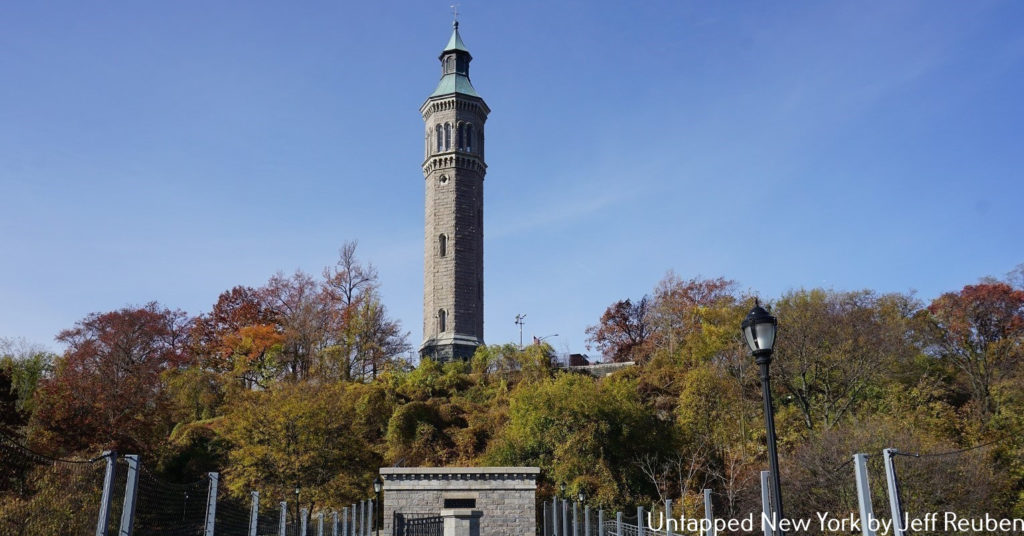
The 200-foot tall Highbridge Water Tower in Washington Heights stands on a bluff above the High Bridge and Harlem River, sharing a park landscape with a swimming pool, baseball field, playground, terrace, and lawns. It is a familiar, if somewhat mysterious landmark for local residents, MetroNorth Hudson Line commuters, and motorists on the Harlem River Drive and other nearby roadways and bridges.
When it was completed 150 years ago, its setting and function were quite different. Constructed as an addition to the Croton water system in a then-thinly populated area, it was a major catalyst in the transformation of Upper Manhattan into bustling urban neighborhoods. For many today, its origins and historic role are unknown, but it is time to rediscover this enigmatic icon which recently reopened for tours following a $5 million restoration. In celebration of its return to the spotlight, we present ten secrets of this distinctive structure!
Join Untapped New York on September 28th for an exclusive photo tour inside the High Bridge Water Tower with professional photographer Andrea Phox! Photographers will be allowed to bring tripods (which are prohibited on public tours), and have the chance to practice a variety of photography techniques from panoramic to infrared, on a variety of subjects including unique city views from 200 feet above ground!
1. It is the Only Surviving Part of the High Service Water Works
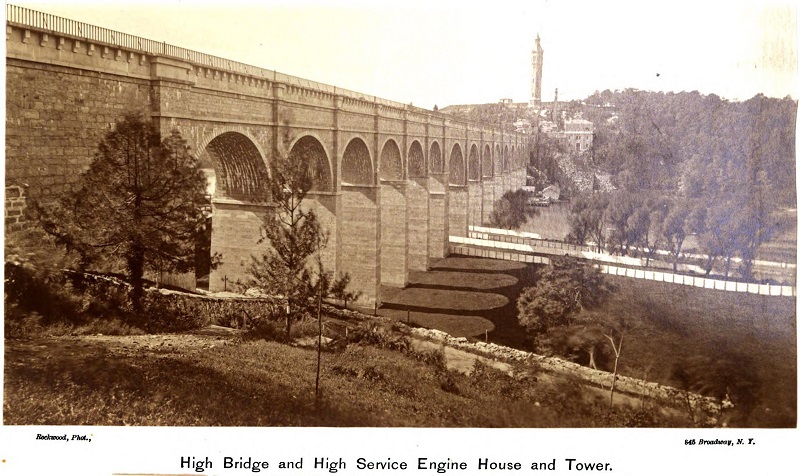
When the Croton Aqueduct opened in 1842, providing Manhattan with an abundant source of clean drinking water, the system relied on gravity for water pressure. As a result, northern Manhattan was not served by the system given that much of it is at elevations higher than the reservoirs in Central Park and at 42nd Street. A bit ironic considering that the High Bridge, which carried the aqueduct over the Harlem River., became a defining feature of the area and a popular destination for visitors following its completion in 1848.
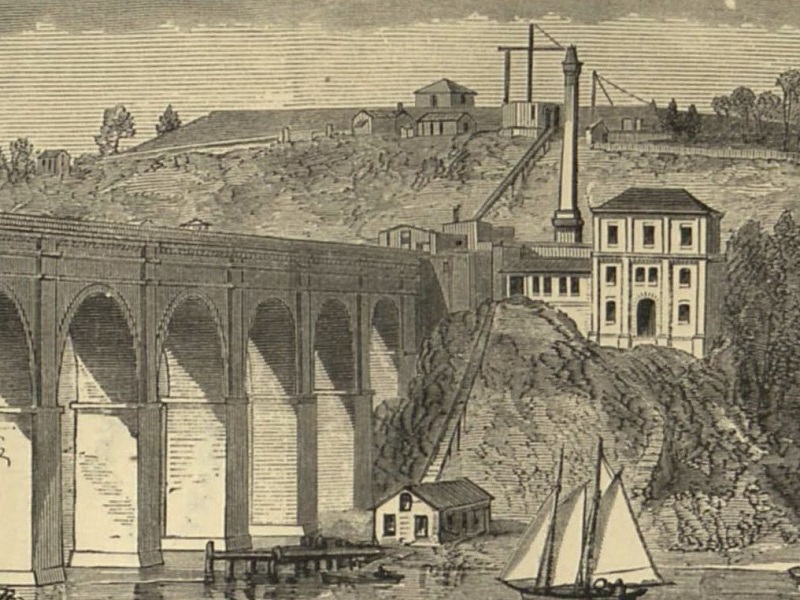
In an era when individual buildings did not have their own water pumps and tanks, a systemic solution was needed. So, the City’s Croton Aqueduct Department added the High Service Water Works to “cure the evil of limited supply to those whose ambition brought them above the level of the reservoir” as the New York Times elegantly phrased it in 1866. The site selected for these facilities was high ground near the Manhattan end of the High Bridge.
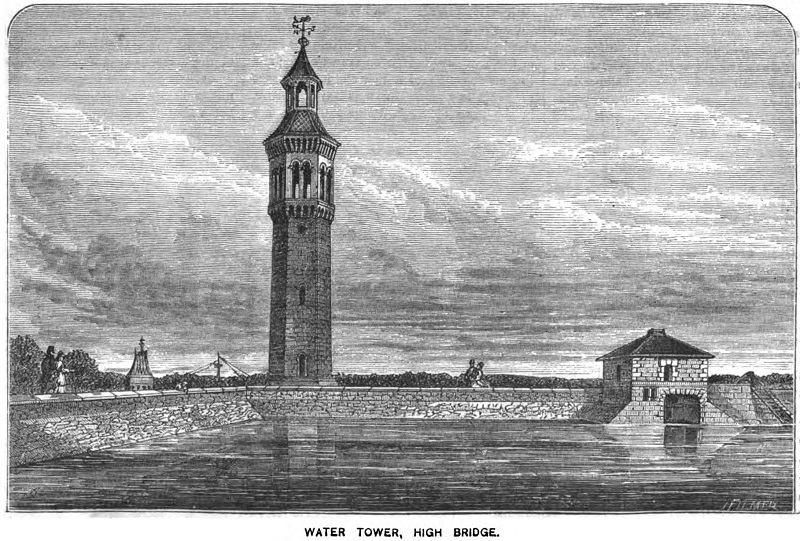
The Water Tower was just one part of this. As shown in the historic images above, next to it was a reservoir, opened in 1870, with a storage capacity of nearly 11 million gallons. It was high enough that it provided water pressure to serve 90 percent of the High Service Area; water pressure for the other 10 percent was provided by a 47,000-gallon water tank located inside the Tower.
Next to the High Bridge, there was also a pumping station with a steam engine, boiler, and smokestack to force water up from the aqueduct, a coal dock and shed along the waterfront, and an inclined plane to lift coal up the steep river bank to the pumping station. All except the Tower no longer exist, nor does another pumping station added in the mid 1890s about 1,000 feet to the north.






